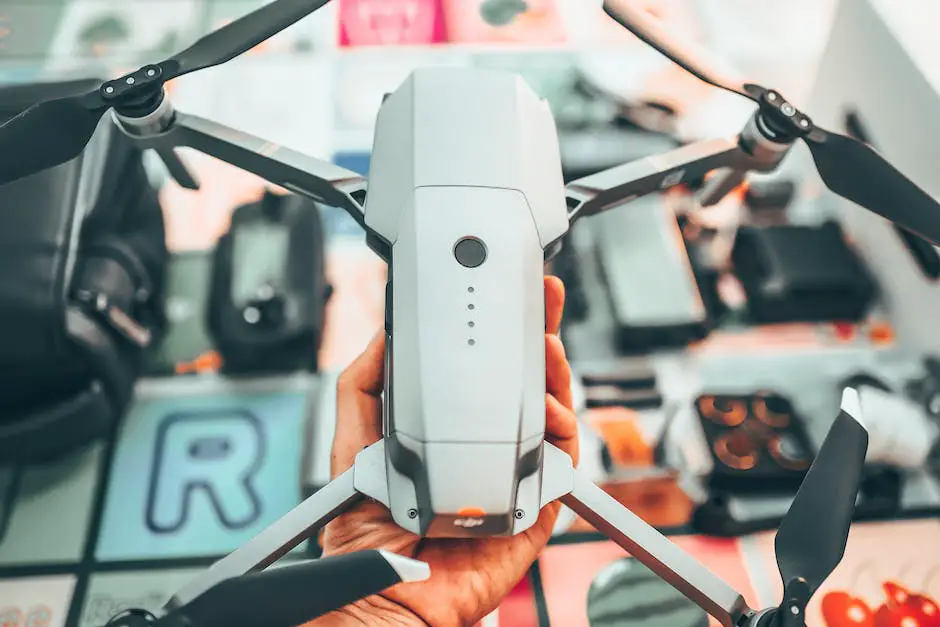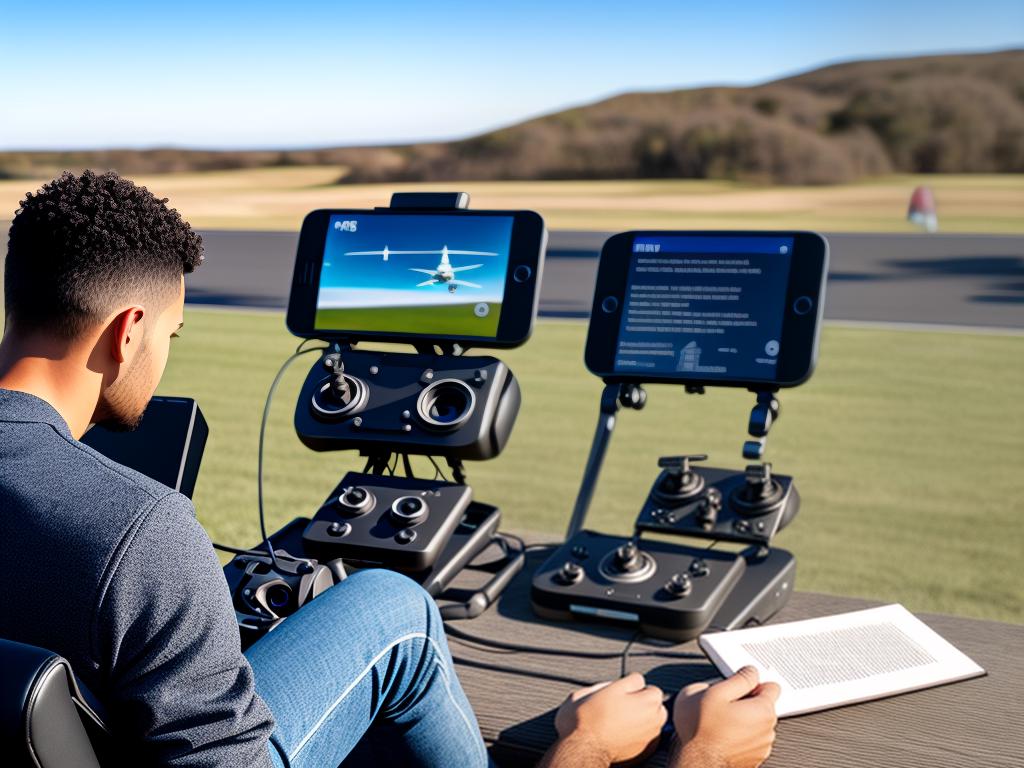The advent of Unmanned Aerial Vehicles (UAVs), more commonly known as drones, has presented infinite possibilities in numerous fields, ranging from aerial photography to delivery services. With this surge in usage comes the need for regulating safe and lawful operations, a responsibility shouldered by the Federal Aviation Administration (FAA). This piece delves deeper into the FAA Drone Pilot License, a crucial requirement for any individual seeking to operate a drone for non-recreational purposes. Discussed in detail are the basic elements of this license, the intricate process of acquiring one, specific requirements and eligibility criteria, why obtaining this license is paramount, and how one can maintain it effectively.
Basics of the FAA Drone Pilot License
Understanding the FAA Drone Pilot License
The Federal Aviation Administration (FAA) Drone Pilot license, also referred to as the Part 107 Remote Pilot Certificate, is a certification that allows individuals to operate drones commercially within the United States. Its primary purpose is to ensure drone pilots operate their aircraft safely and responsibly in the national airspace system (NAS). The significance of acquiring this license lies in its role in reducing potential safety risks by enforcing knowledge and operational standards among drone pilots.
FAA’s Scope of Regulation
The FAA holds jurisdiction over all airspace within the United States and as such, regulates all aircraft operation, including that of unmanned aircraft systems (drones). This regulation extends to any drone used for business or commercial purposes, regardless of size or weight, and the activities include but are not limited to aerial photography, inspections, and agricultural applications. Simultaneously, some drones used for recreational purposes may also need to adhere to specified FAA rules and guidelines depending on their operation.
Relevance of the FAA Drone Pilot License
Acquiring an FAA Drone Pilot License is essential for individuals or entities that use drones in the course of their business. This is mandated by federal law and any unauthorized drone operations can result in significant fines and potential legal liability. The license showcases that the operator is familiar with regulations, operating requirements, and procedures for safely flying drones. Furthermore, many insurance companies require proof of a valid FAA Drone Pilot License before they will cover drone-related operations.
The significance of this license also goes beyond meeting legal and insurance requirements. It serves as a testament to a drone pilot’s knowledge and competence. This can be advantageous for commercial drone pilots as it can increase credibility and trustworthiness in the eyes of prospective clients, thereby expanding their business opportunities.
For frequent drone flyers, obtaining an FAA drone pilot license comes highly recommended, even if it is not required for recreational use.
Undertaking the certification process imbues drone operators with critical knowledge regarding safety precautions, operational best practices, and an in-depth understanding of navigational and airspace rules. The net result is a safer, more informed pattern of drone usage.

The Process of Acquiring an FAA Drone Pilot License
Understanding the FAA Drone Pilot License
Within the United States, the Federal Aviation Administration (FAA) is the authoritative body overseeing all private and business-related aviation matters. One of the FAA’s key roles involves the licensing of drone operators. This license, officially dubbed the Part 107 Remote Pilot Certificate, is a vital requirement for anyone intending to use their drone for commercial purposes within the country’s airspace.
First Step: Understanding FAA’s Requirements
Firstly, to qualify for this license, you must be at least 16 years old, be able to read, speak and understand English, and be physically and mentally fit to safely operate a drone. Other requirements include passing the initial aeronautical knowledge exam and undergoing a security background check by the Transportation Security Administration (TSA).
Step Two: Registering Your Drone
Before you seek to obtain the Part 107 Remote Pilot Certificate, you must possess a registered drone. You can register your drone online via the FAA’s DroneZone website. Remember to label your drone with the registration number assigned to it by the FAA.
Step Three: Preparing for the Aeronautical Knowledge Test
The Aeronautical Knowledge Test covers topics such as airspace classifications, flight restrictions, aeronautical decision-making and emergency procedures, radio communication procedures, and meteorology. One can prepare for this test by self-studying using FAA recommended resources, or through signing up for a prep course.
Step Four: Scheduling the Knowledge Test
The Knowledge Test can be scheduled with an FAA-approved Knowledge Testing Center. These centers are located across the country, and you can find one that is most convenient for you. The test consists of 60 multiple-choice questions, and a minimum score of 70% is required to pass.
Passing the Aeronautical Knowledge Test
Upon passing the test, complete the FAA Form 8710-13 for a remote pilot certificate (FAA Airman Certificate and/or Rating Application) using the electronic FAA Integrated Airman Certificate and/or Rating Application system (IACRA).
Final Step: Applying for the Remote Pilot Certificate
Next, you will have to pass a TSA security background check. Once cleared, the FAAR will send you an email with instructions to print your temporary remote pilot certificate from IACRA.
A permanent remote pilot certificate will be sent via USPS mail and can be expected to arrive within 6 to 8 weeks. It’s important to know that this certificate isn’t a one-and-done deal. It’s valid for only two years, after which you’ll need to pass a recurrent knowledge test to renew it.
In essence, obtaining an FAA Drone Pilot License requires a clear understanding of the FAA’s rules, the proper registration of your drone, preparation for and success in the aeronautical knowledge test, and application for the Part 107 Remote Pilot Certificate. Upon completion, you will be authorized to operate drones for commercial purposes within US airspace.

Requirements and Eligibility for the FAA Drone Pilot License
Prerequisites for Gaining an FAA Drone Pilot License
In order to qualify for an FAA Drone Pilot License, more accurately termed a Remote Pilot Certificate and issued by the Federal Aviation Administration (FAA), individuals are expected to fulfill certain criteria.
The initial requirement is age-related – candidates must be 16 years or older, which is the minimum age designated by the FAA for holders of a Remote Pilot Certificate.
Another key prerequisite is language proficiency. The ability to effectively read, write, converse in, and comprehend English is required of all drone pilots. Given that English is the accepted global language of aviation, this competency is vital for efficient communication, especially during emergency situations or when navigating controlled airspace.
Physical and Mental Health Criteria
Physical and mental health also play a significant role in obtaining a FAA drone pilot license. Candidates must be in good physical and mental condition to safely pilot a drone. They must not have any physical or mental condition that could interfere with the safe operation of a small Unmanned Aircraft System (sUAS). If there is a pre-existing medical condition that might affect the safety of drone operations, it should be well-managed, and the operator must be under medical supervision.
Additional Eligibility Criteria
In addition to age, language proficiency, and health criteria, the FAA also requires candidates to pass an aeronautical knowledge test at an FAA-approved knowledge testing center. This test ensures that potential drone pilots have adequate knowledge of aviation law and safety to operate a drone without threatening other aircraft or individuals on the ground.
Moreover, to maintain the validity of their license, drone pilots have to pass a recurrent knowledge test every two years.
Applicants must also be vetted by the Transportation Security Administration (TSA). This process is done to ensure the individual obtaining the certificate does not pose a threat to national security.
Lastly, prospective drone pilots need to complete an FAA Airman Certificate and/or Rating Application (ACRA) to receive their Remote Pilot Certificate.
The Federal Aviation Administration (FAA) provides a pathway for interested individuals to become licensed drone pilots. Once all requirements are fulfilled, these individuals become eligible to receive their FAA Drone Pilot License. This credential allows them to legally operate and maneuver drones for commercial purposes, strictly adhering to regulations established by the FAA.

Why an FAA Drone Pilot License is Crucial
The Significance of Acquiring an FAA Drone Pilot License
Holding a Drone Pilot License issued by the Federal Aviation Administration (FAA), often referred to as the Part 107 Remote Pilot Certificate, is paramount for anyone wishing to participate in commercial drone operations within the United States. The governance of the FAA extends to all civil aviation activities within the country, specifically covering the operation of unmanned aerial systems (UAS) or drones.
It’s important to underscore that without this license, any drone operation undertaken for commercial reasons would be considered illegal, attracting severe repercussions. Operators found guilty of operating drones without valid certification are liable to face severe penalties including hefty fines of up to $32,666 per violation, and could also potentially face imprisonment. These stringent penalties serve to dissuade unlicensed drone operations thereby ensuring universal compliance with FAA regulations among drone pilots.
Advantages of Obtaining an FAA Drone Pilot License
Beyond legal requirements and avoiding fines, possessing an FAA Drone Pilot License also opens up a world of opportunities across various sectors where drone technology is increasingly being utilized.
For example, in the field of photography and videography, licensed drone pilots have an advantage. They are allowed to use drones to capture breathtaking aerial footage, which can be used in films, documentaries, and TV commercials. This elevated perspective can offer unique and creative opportunities that conventional ground-based photography can’t achieve.
In the transportation industry, drones are becoming increasingly prominent. Companies are exploring drone usage for package delivery services, and having an FAA license can place you at the forefront of this blossoming sector. It gives you the credibility to become a pioneer in a rapidly advancing field.
Moreover, in the field of public safety and security, drones are being used more and more. Law enforcement agencies, fire departments, and emergency services all utilize drone technology for various purposes. From surveying disaster-stricken areas to aid in search and rescue efforts, drones are becoming integral tools for emergency response. FAA licensed pilots are therefore sought after in these sectors due to their verified skills and understanding of air law.
Obtaining an FAA Drone Pilot License also allows pilots to better understand the rules, regulations, and safe operational practices of drone usage. This includes knowing how to fly a drone within the bounds of the law, how to navigate the National Airspace System, and understanding weather patterns for safe drone operations.
Understanding the Importance of FAA Drone Pilot License
An FAA Drone Pilot License is increasingly becoming essential as the drone industry continues to expand. It serves not only to fulfill legal requirements preventing hefty penalties but also opens a plethora of opportunities in diverse sectors such as photography, transportation, and public safety. Moreover, it emphasizes safety and efficiency in drone operations as pilots are comprehensively trained and educated on operational and legal practices.

Maintaining Your FAA Drone Pilot License
Necessity of Continuous Learning and Updates for Maintaining Your FAA Drone Pilot License
Regular learning, especially about the ever-changing FAA regulations, is central to maintaining your FAA drone pilot license. The complex nature of these regulations and their propensity for constant updates necessitate every licensed drone pilot to be current. The FAA consistently announces updates to regulations, which can considerably influence drone functionality. Being unaware of these changes can result in penalties and even compromise the validity of the pilot’s license.
Online Resources and Training Courses
For consistent and thorough updates, one should look towards online resources like the FAA’s official website, drone forums, and newsletters that specialize in UAV law. Training courses offered by FAA-approved institutions are also beneficial for brushing up on current regulation and adopting the latest best practices. Many of these courses offer continuing education credits that not only help to maintain a high level of expertise but could also be a requirement for license renewal.
The Importance of Regular Drone Maintenance
Just as important as keeping up with regulatory changes is the regular and thorough maintenance of the drone itself. Proper maintenance ensures your drone operates safely and at peak performance levels. You should undertake routine checks before and after every flight, looking for any damage or irregularities. Should there be any issue, promptly address it and, if necessary, consult a professional for repair or replacement of broken parts.
FAA Drone License Renewal Process
The FAA requires drone pilots to renew their licenses every two years. The FAA’s renewal process involves passing an aeronautical knowledge test again, referred to as the recurrent knowledge test. The recurrent knowledge test must be scheduled at an FAA-approved knowledge testing center. Pay attention to the expiration date of your license, as not renewing it in time can lead to penalties.
The renewal test is in place to ensure that all licensed drone pilots are up to date with the changing FAA regulations and can operate their drones safely. It covers topics such as aircraft operations and safety, weather, emergency procedures, and regulations specific to drone operations.
In conclusion
It’s important to understand that maintaining an FAA drone pilot license is an ongoing responsibility. It requires staying abreast of FAA regulations, regularly maintaining the drone, periodically renewing your license, and actively engaging in continuous learning through different resources. These practices ensure that all drone operations adhere to the highest safety standards as per FAA regulations.

Grasping the essence of FAA Drone Pilot License is not an end in itself but a continuous process. It is a testament to an operator’s commitment to safety practices, their up-to-date knowledge, and their dedication in harmoniously integrating drones into the national airspace. More than just a legal obligation, it provides opportunities—opening doors to an expanding industry-driven by innovation and technology. With comprehensive understanding, continued education, and adherence to FAA regulations, the scales tilt from simply being a drone operator to being a licensed, responsible, and accomplished drone pilot—an FAA Certified Drone Pilot.
Originally posted 2023-07-27 16:35:00.




